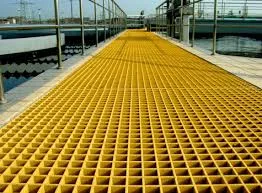
-
 Afrikaans
Afrikaans -
 Albanian
Albanian -
 Amharic
Amharic -
 Arabic
Arabic -
 Armenian
Armenian -
 Azerbaijani
Azerbaijani -
 Basque
Basque -
 Belarusian
Belarusian -
 Bengali
Bengali -
 Bosnian
Bosnian -
 Bulgarian
Bulgarian -
 Catalan
Catalan -
 Cebuano
Cebuano -
 China
China -
 China (Taiwan)
China (Taiwan) -
 Corsican
Corsican -
 Croatian
Croatian -
 Czech
Czech -
 Danish
Danish -
 Dutch
Dutch -
 English
English -
 Esperanto
Esperanto -
 Estonian
Estonian -
 Finnish
Finnish -
 French
French -
 Frisian
Frisian -
 Galician
Galician -
 Georgian
Georgian -
 German
German -
 Greek
Greek -
 Gujarati
Gujarati -
 Haitian Creole
Haitian Creole -
 hausa
hausa -
 hawaiian
hawaiian -
 Hebrew
Hebrew -
 Hindi
Hindi -
 Miao
Miao -
 Hungarian
Hungarian -
 Icelandic
Icelandic -
 igbo
igbo -
 Indonesian
Indonesian -
 irish
irish -
 Italian
Italian -
 Japanese
Japanese -
 Javanese
Javanese -
 Kannada
Kannada -
 kazakh
kazakh -
 Khmer
Khmer -
 Rwandese
Rwandese -
 Korean
Korean -
 Kurdish
Kurdish -
 Kyrgyz
Kyrgyz -
 Lao
Lao -
 Latin
Latin -
 Latvian
Latvian -
 Lithuanian
Lithuanian -
 Luxembourgish
Luxembourgish -
 Macedonian
Macedonian -
 Malgashi
Malgashi -
 Malay
Malay -
 Malayalam
Malayalam -
 Maltese
Maltese -
 Maori
Maori -
 Marathi
Marathi -
 Mongolian
Mongolian -
 Myanmar
Myanmar -
 Nepali
Nepali -
 Norwegian
Norwegian -
 Norwegian
Norwegian -
 Occitan
Occitan -
 Pashto
Pashto -
 Persian
Persian -
 Polish
Polish -
 Portuguese
Portuguese -
 Punjabi
Punjabi -
 Romanian
Romanian -
 Russian
Russian -
 Samoan
Samoan -
 Scottish Gaelic
Scottish Gaelic -
 Serbian
Serbian -
 Sesotho
Sesotho -
 Shona
Shona -
 Sindhi
Sindhi -
 Sinhala
Sinhala -
 Slovak
Slovak -
 Slovenian
Slovenian -
 Somali
Somali -
 Spanish
Spanish -
 Sundanese
Sundanese -
 Swahili
Swahili -
 Swedish
Swedish -
 Tagalog
Tagalog -
 Tajik
Tajik -
 Tamil
Tamil -
 Tatar
Tatar -
 Telugu
Telugu -
 Thai
Thai -
 Turkish
Turkish -
 Turkmen
Turkmen -
 Ukrainian
Ukrainian -
 Urdu
Urdu -
 Uighur
Uighur -
 Uzbek
Uzbek -
 Vietnamese
Vietnamese -
 Welsh
Welsh -
 Bantu
Bantu -
 Yiddish
Yiddish -
 Yoruba
Yoruba -
 Zulu
Zulu
frp handrail
The Rise of FRP Handrails A Blend of Safety, Durability, and Aesthetic Appeal
In modern architecture and construction, the integration of advanced materials has revolutionized the way structures are built and enhanced. Among these materials, Fiber Reinforced Polymer (FRP) has gained remarkable attention, especially in the manufacturing of handrails. FRP handrails offer a unique combination of safety, durability, and aesthetic appeal, making them an increasingly popular choice in both commercial and residential projects.
What is FRP?
Fiber Reinforced Polymer, commonly known as FRP, is a composite material made by combining a polymer matrix with fibers, typically glass or carbon. This combination results in a material that is lightweight yet has exceptional strength and structural integrity. The advantages of FRP stem from its unique properties—it's resistant to corrosion, chemical damage, and UV degradation, making it ideal for various environments, including coastal and industrial settings.
Safety and Compliance
One of the primary functions of handrails is to provide safety and support for individuals navigating stairs, ramps, and elevated platforms. FRP handrails meet and often exceed safety standards set by regulatory bodies. Their non-slip surfaces contribute to fall prevention, and they are designed to withstand significant impacts. Furthermore, since FRP is non-conductive, it provides additional safety in environments where electrical hazards are a concern.
Durability in Various Environments
FRP handrails excel in durability compared to traditional materials like wood or metal. Wood can rot and warp over time, while metal can corrode when exposed to certain environmental conditions. In contrast, FRP is resistant to moisture, ensuring that it does not swell or degrade, even in damp or rainy environments. This durability extends the lifespan of the handrails, reducing the need for frequent repairs or replacements, resulting in long-term cost savings for building owners and managers.
Aesthetic Versatility
frp handrail

Beyond their functional benefits, FRP handrails can be designed to enhance the aesthetic appeal of a space. They are available in various colors, textures, and finishes, allowing architects and designers the flexibility to integrate them into both contemporary and traditional designs seamlessly. Whether it’s a sleek, modern look required for a high-end commercial building or a more rustic appearance for a scenic nature trail, FRP can be customized to match the desired aesthetic.
Sustainability and Eco-Friendliness
In today’s world, sustainability is paramount, and FRP handrails are a noteworthy option for environmentally conscious builders. The production process of FRP can be less energy-intensive than that of traditional materials. Additionally, many manufacturers are exploring ways to incorporate recycled materials into their FRP composites. The longevity of these handrails also means that fewer resources are needed for replacements over time, contributing to a decrease in environmental impact.
Ease of Installation
The lightweight nature of FRP makes it easier to handle and install compared to heavier materials. This characteristic not only reduces labor costs but also minimizes the risk of injury during installation. The pre-manufactured components can quickly be put together on-site, speeding up the construction process and allowing projects to stay on schedule.
Future of FRP Handrails
As the demand for innovative building materials continues to increase, FRP handrails are likely to become even more prevalent in future construction projects. Advances in technology will undoubtedly lead to further improvements in the material, making it even stronger, lighter, and more sustainable. With a focus on safety, durability, and design versatility, FRP handrails are set to reshape the landscape of construction and safety features for many years to come.
In conclusion, FRP handrails represent a compelling solution for those seeking reliable safety features without compromising on style. Their unique combination of benefits makes them an ideal choice for a wide range of applications, paving the way for a future where safety and design go hand in hand.









